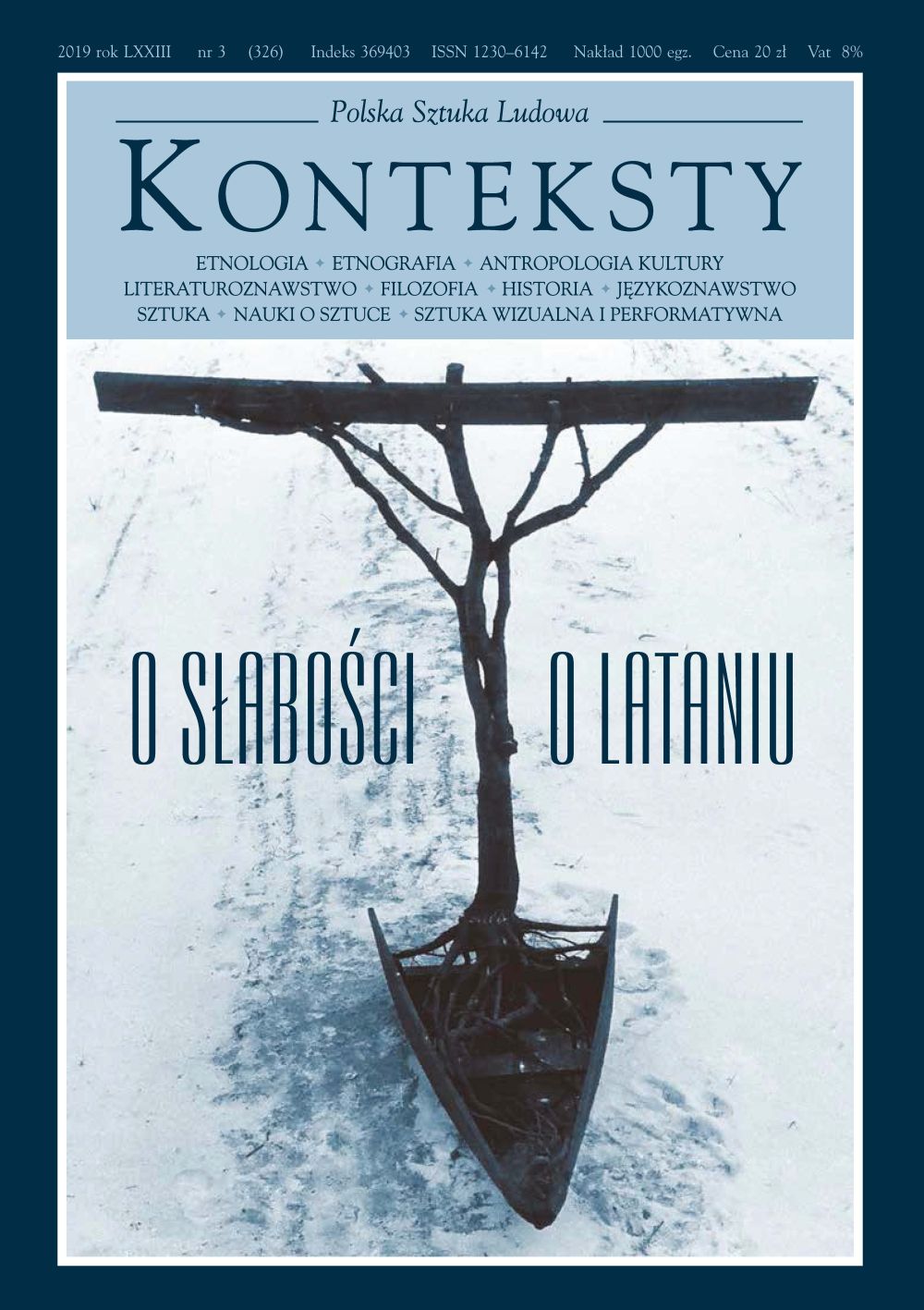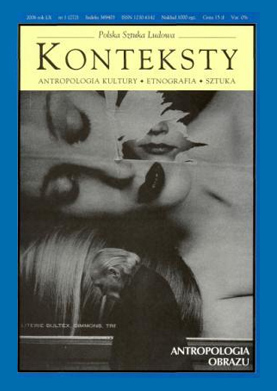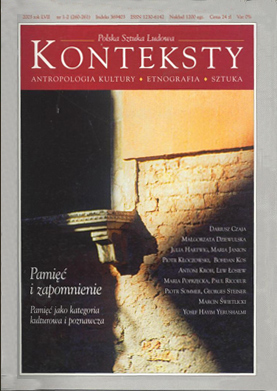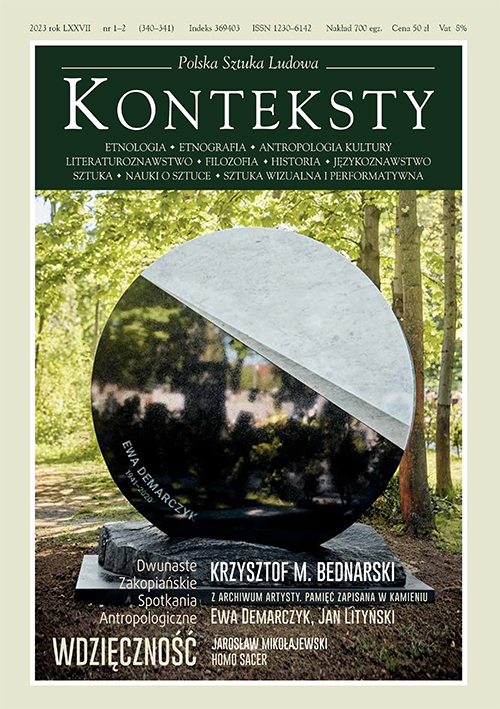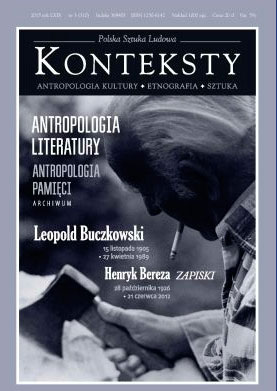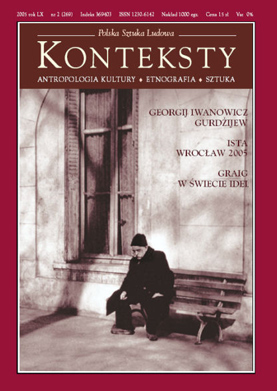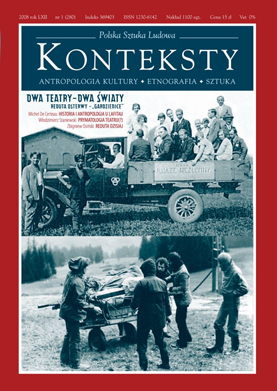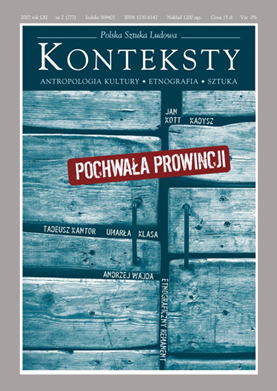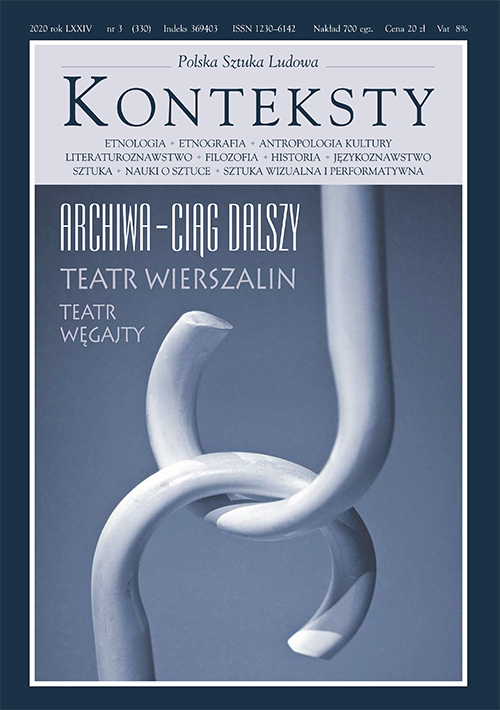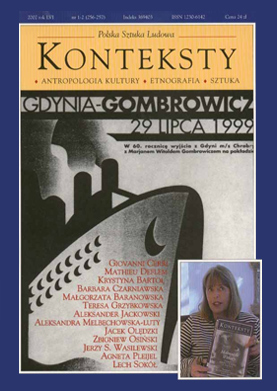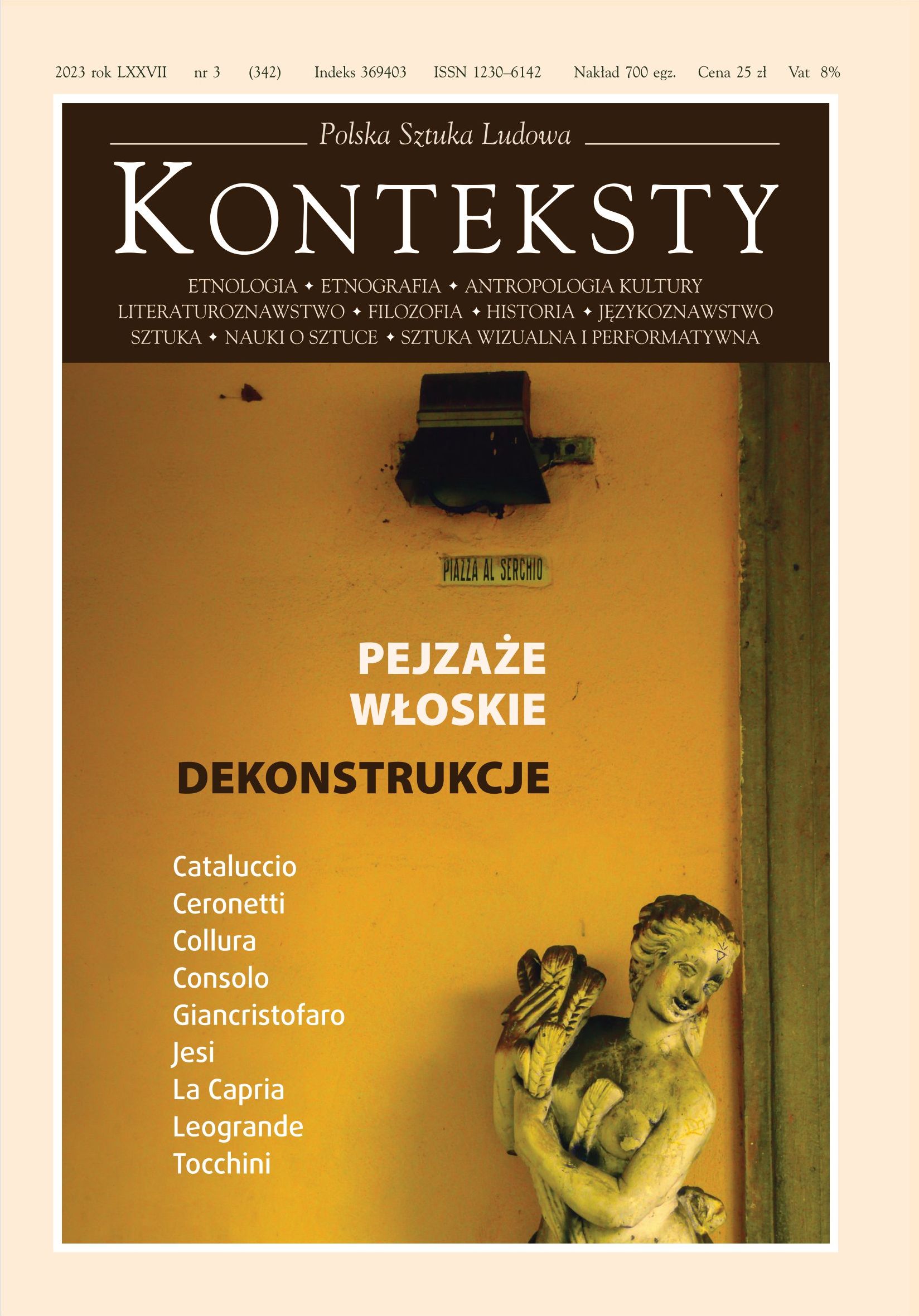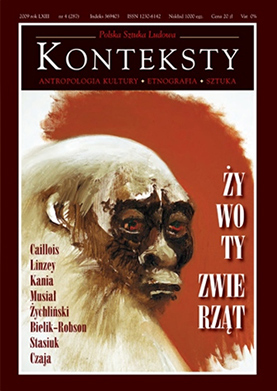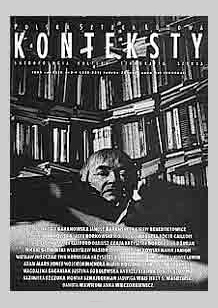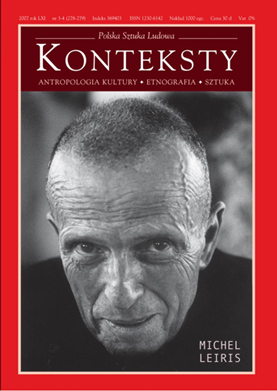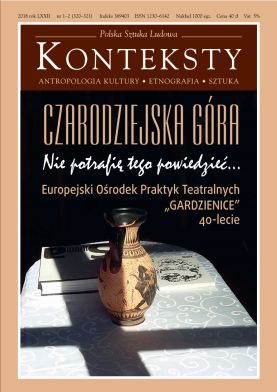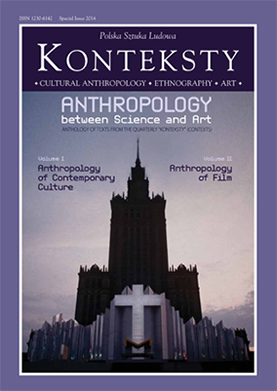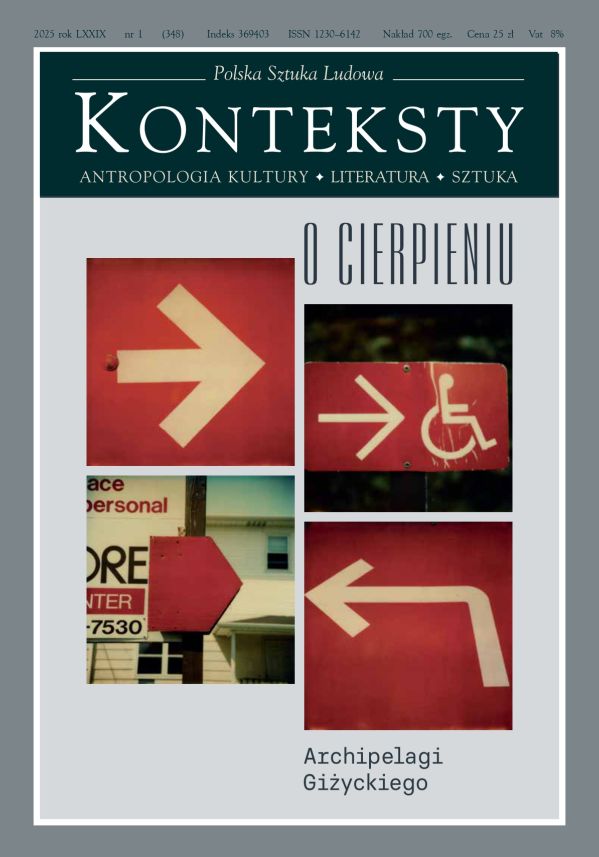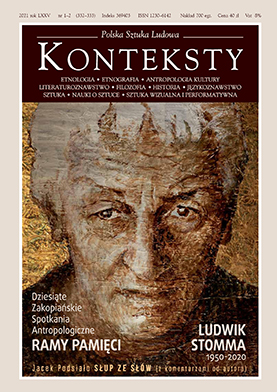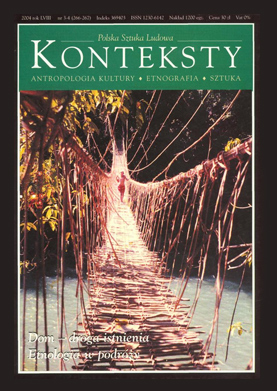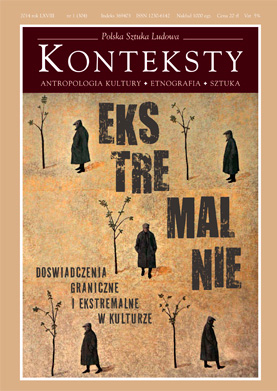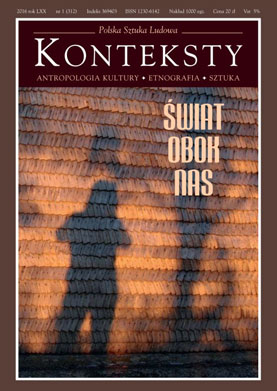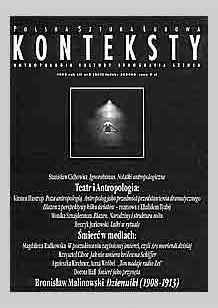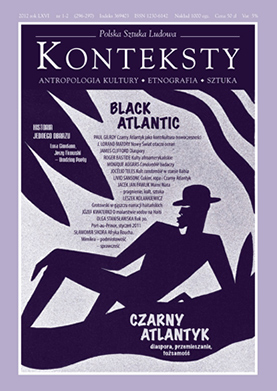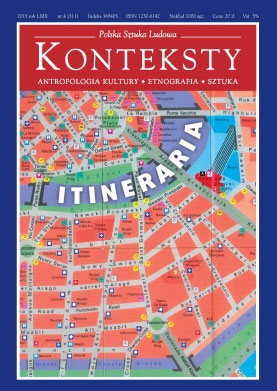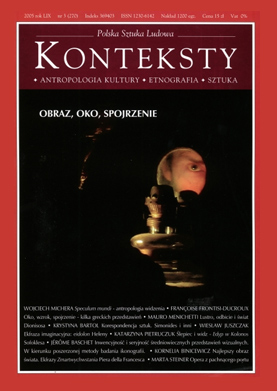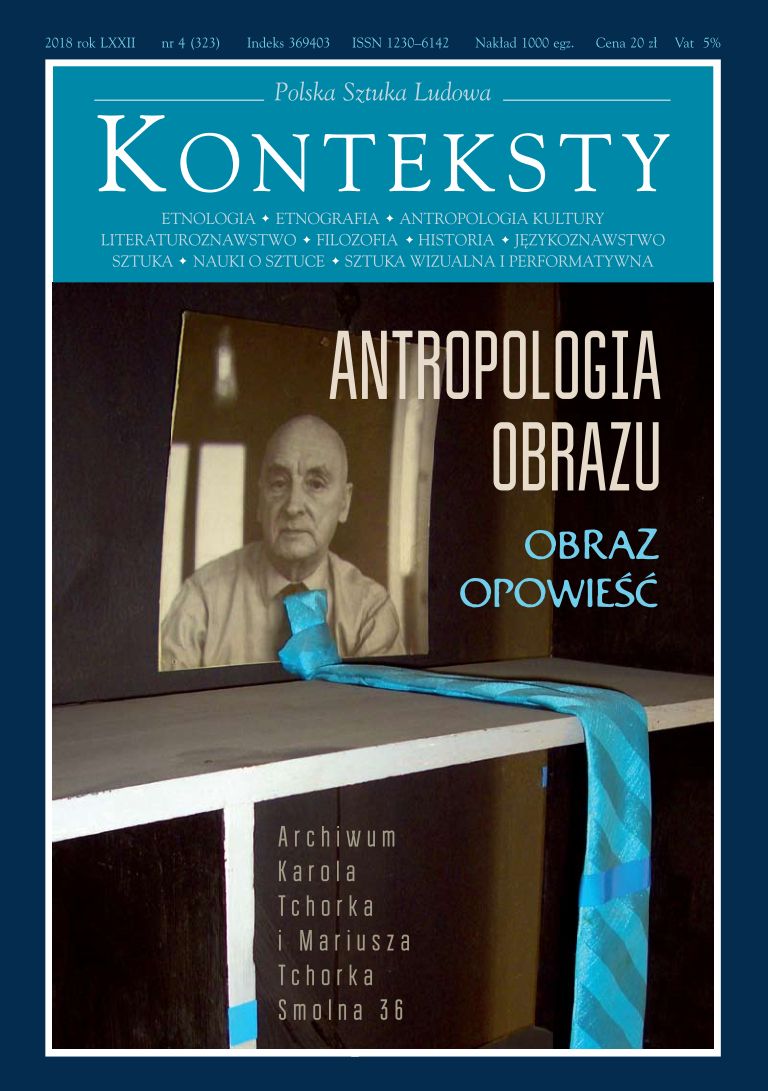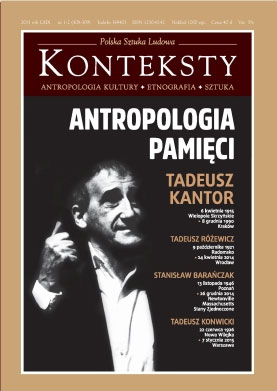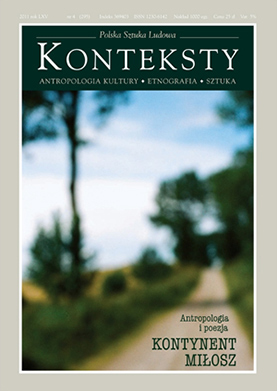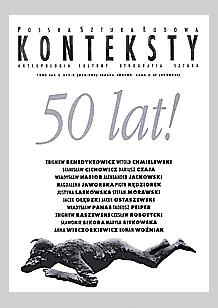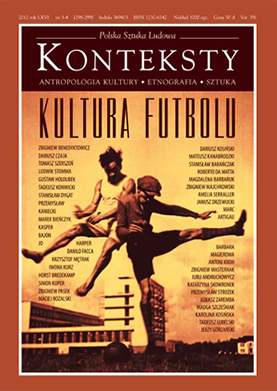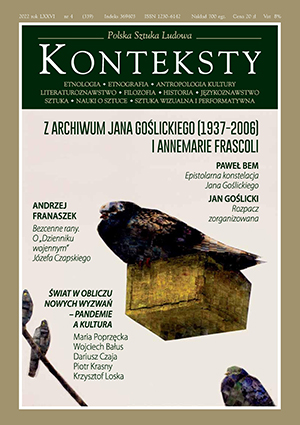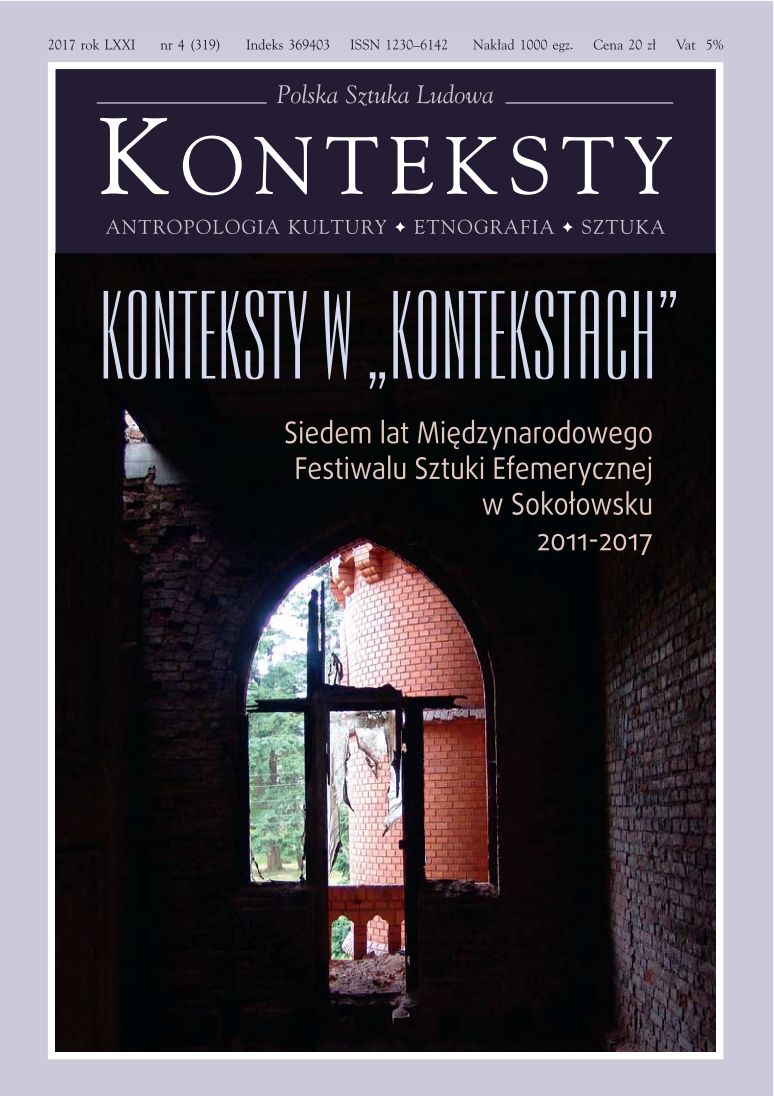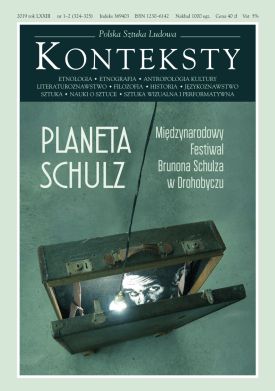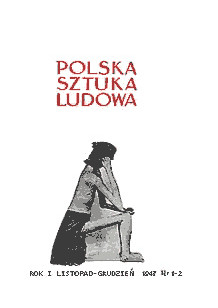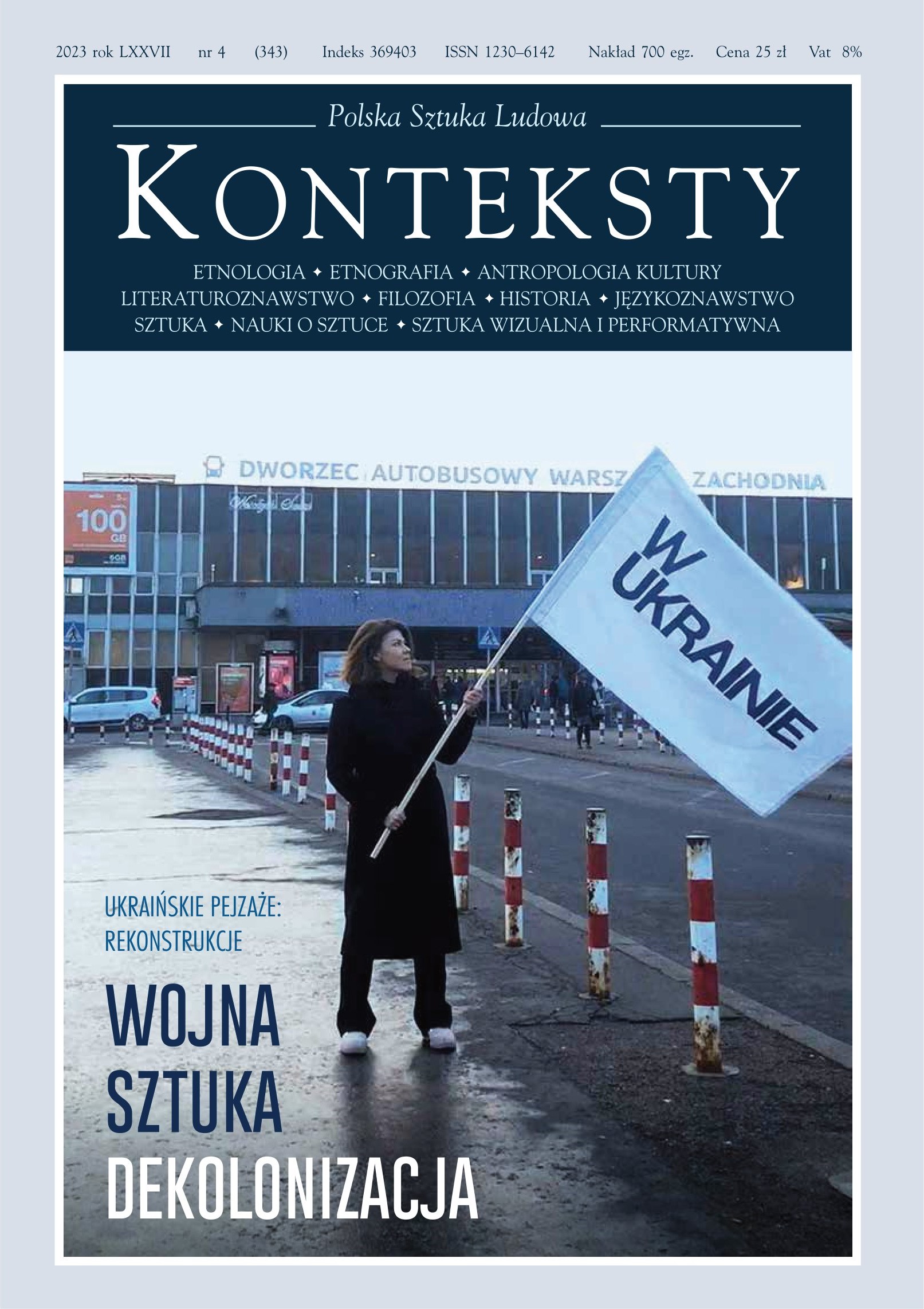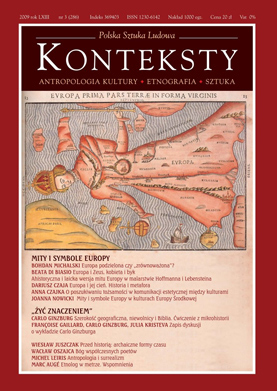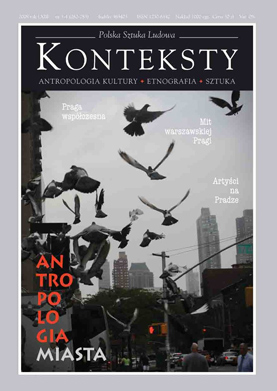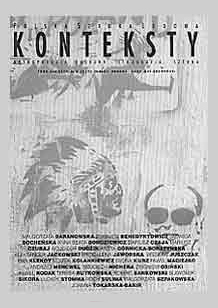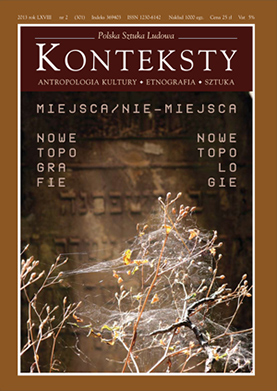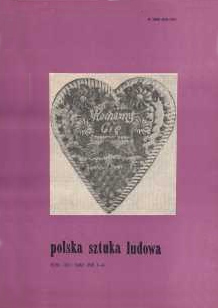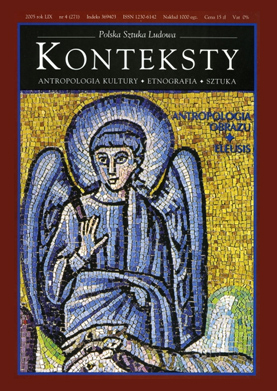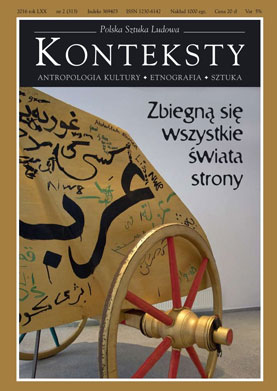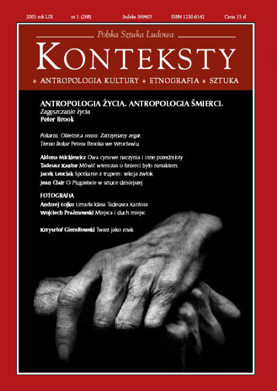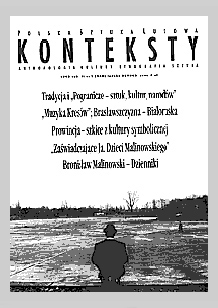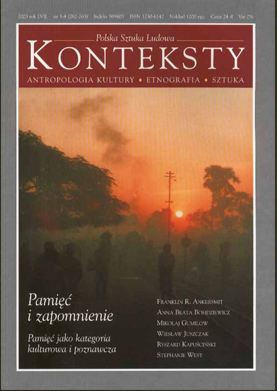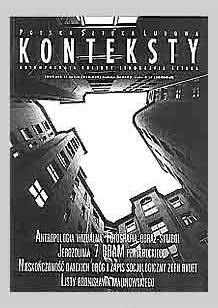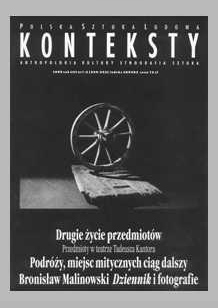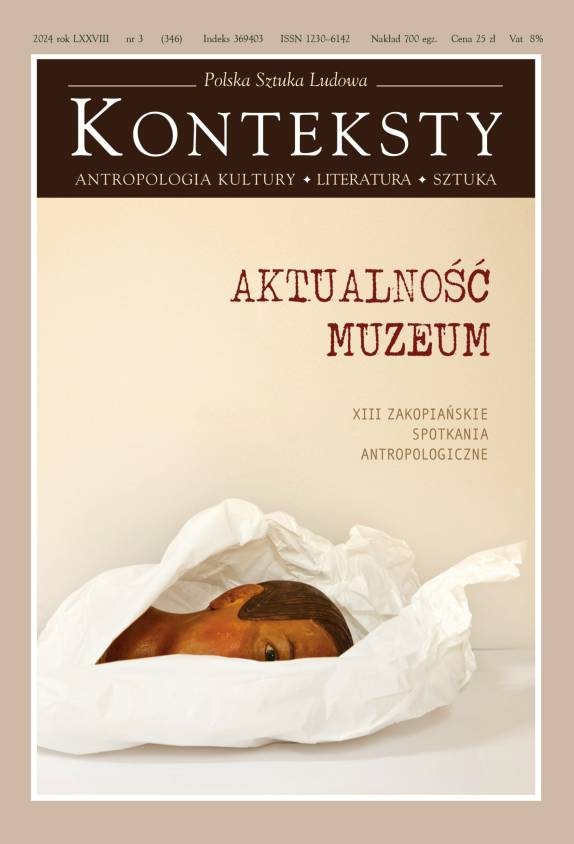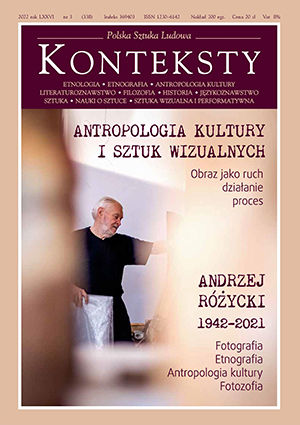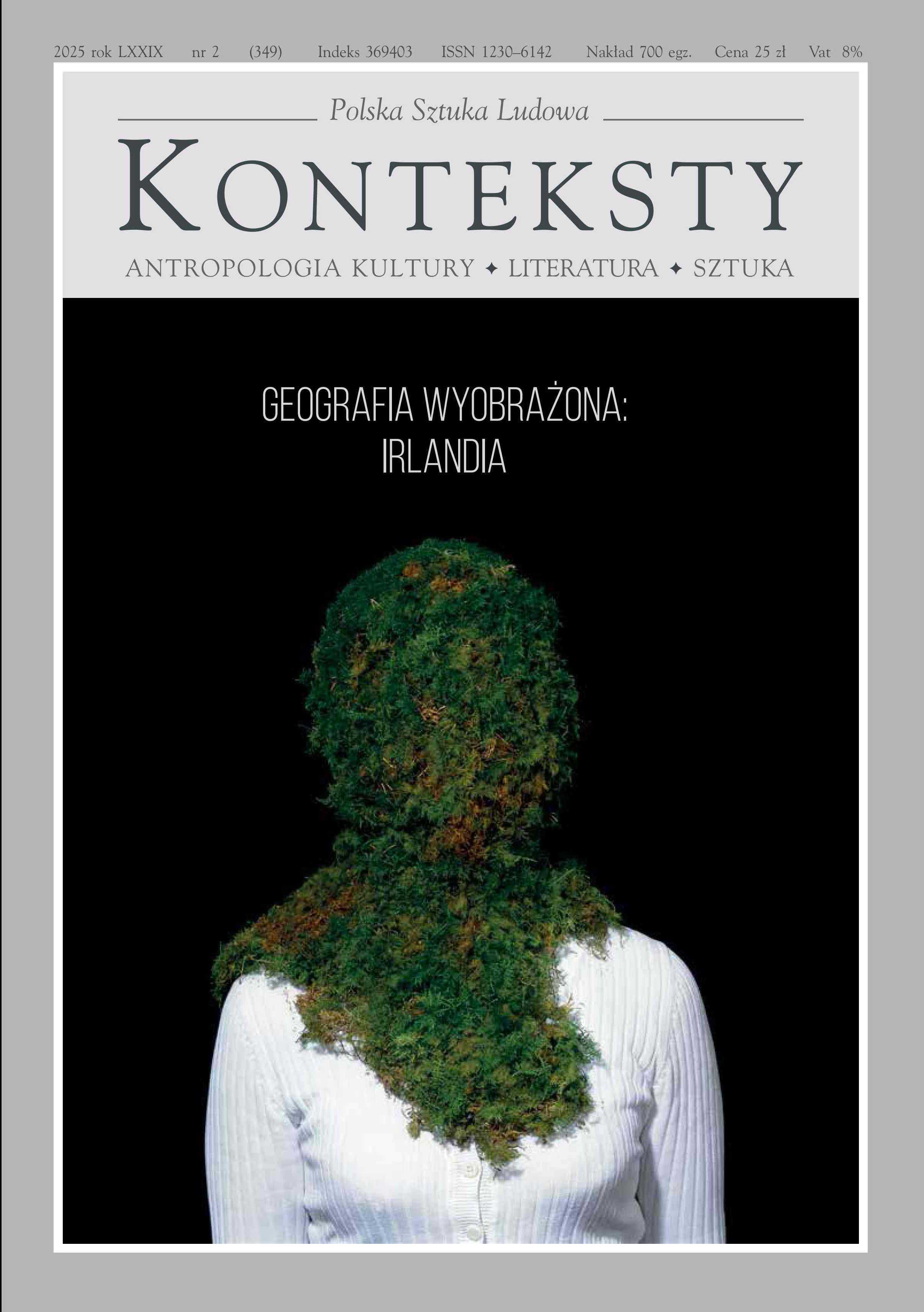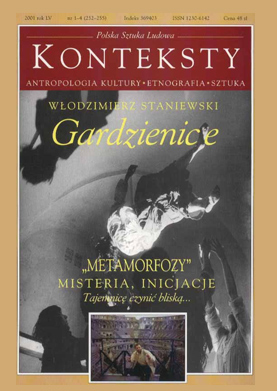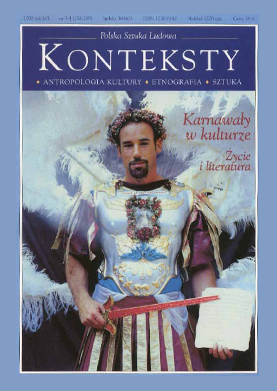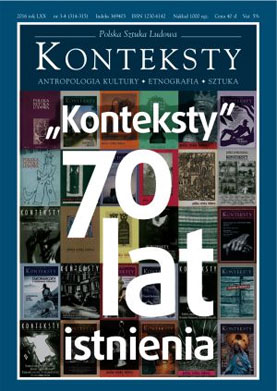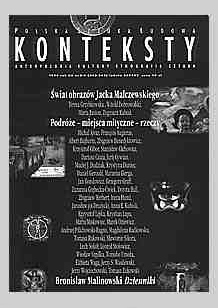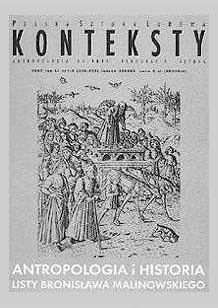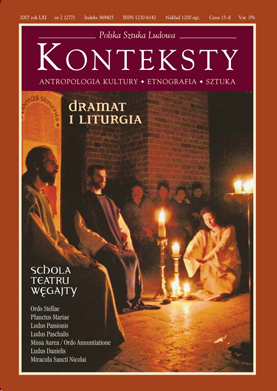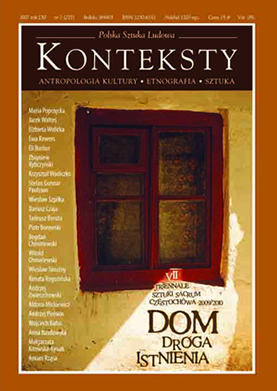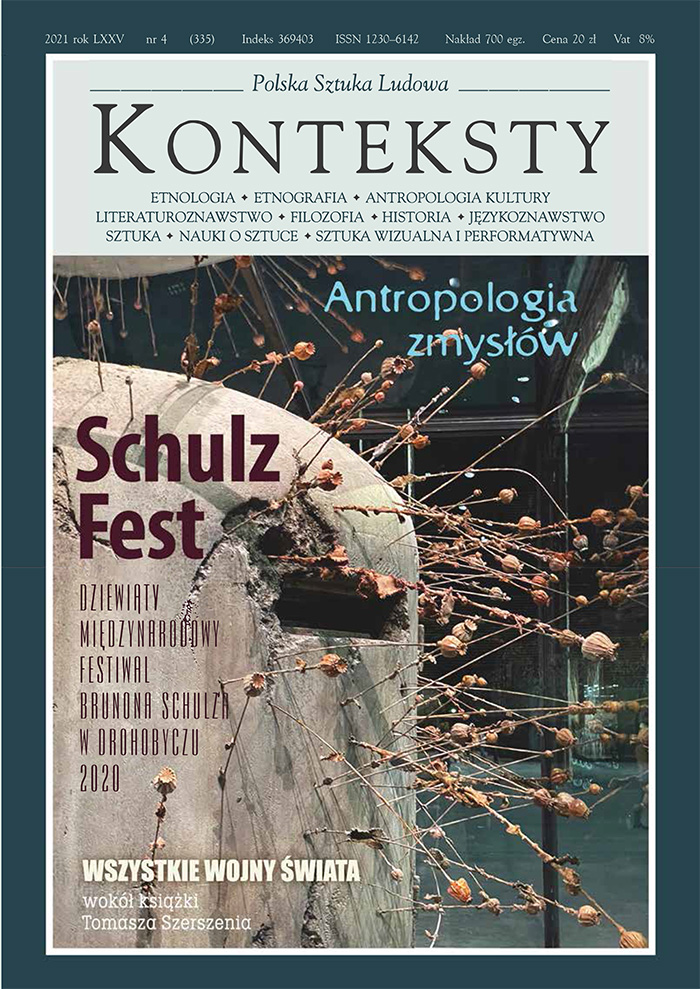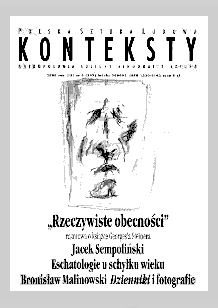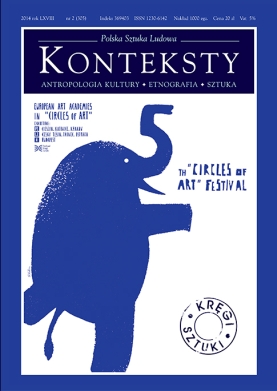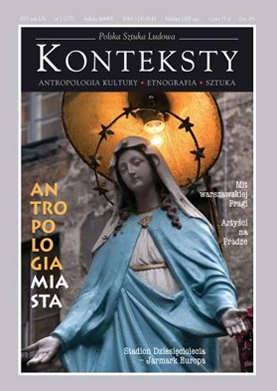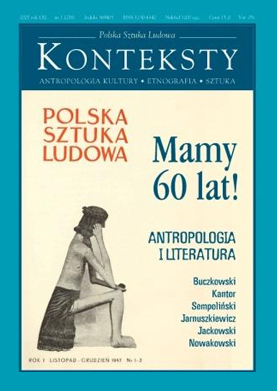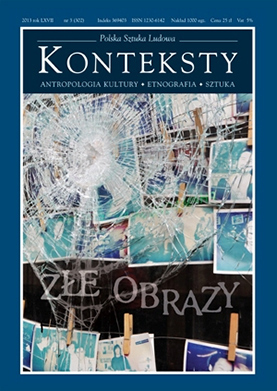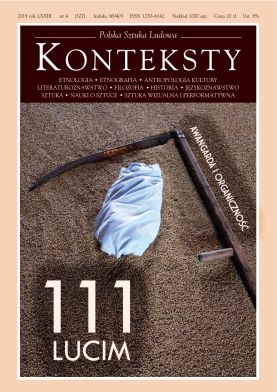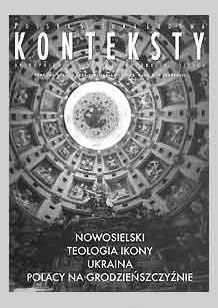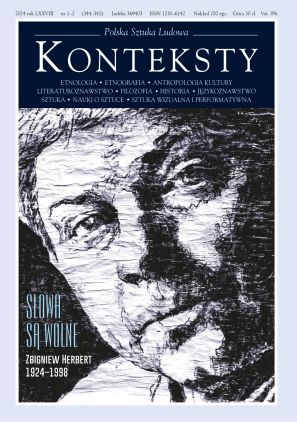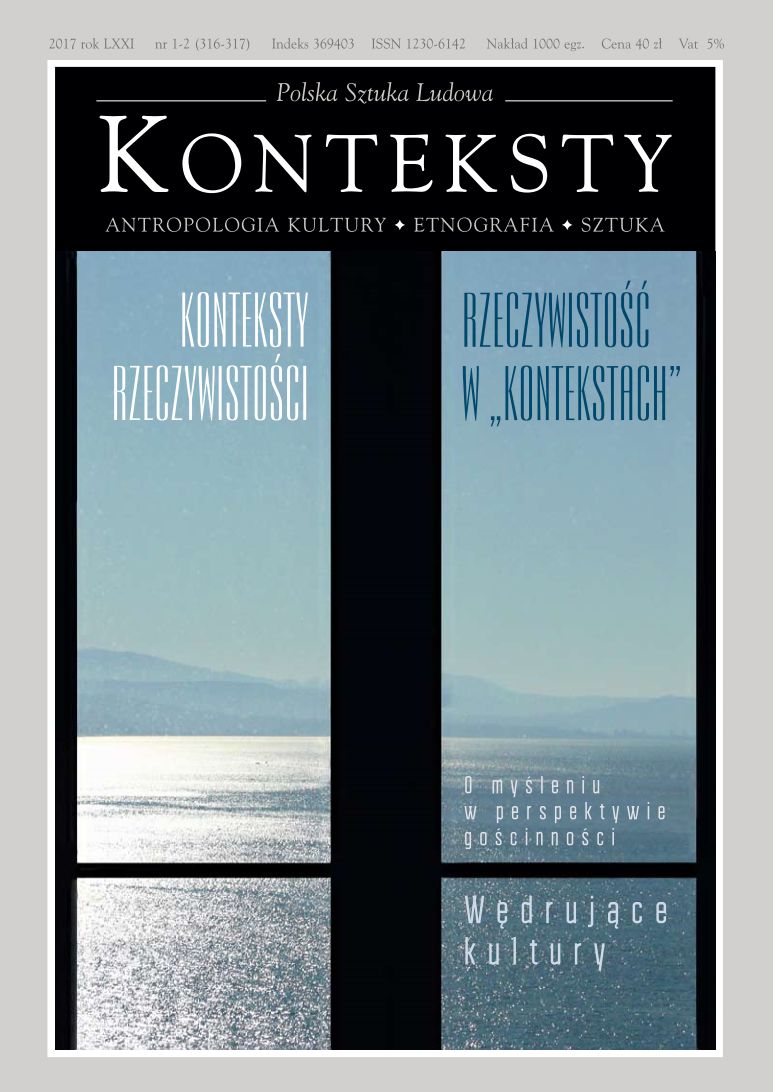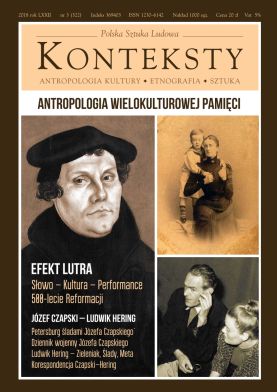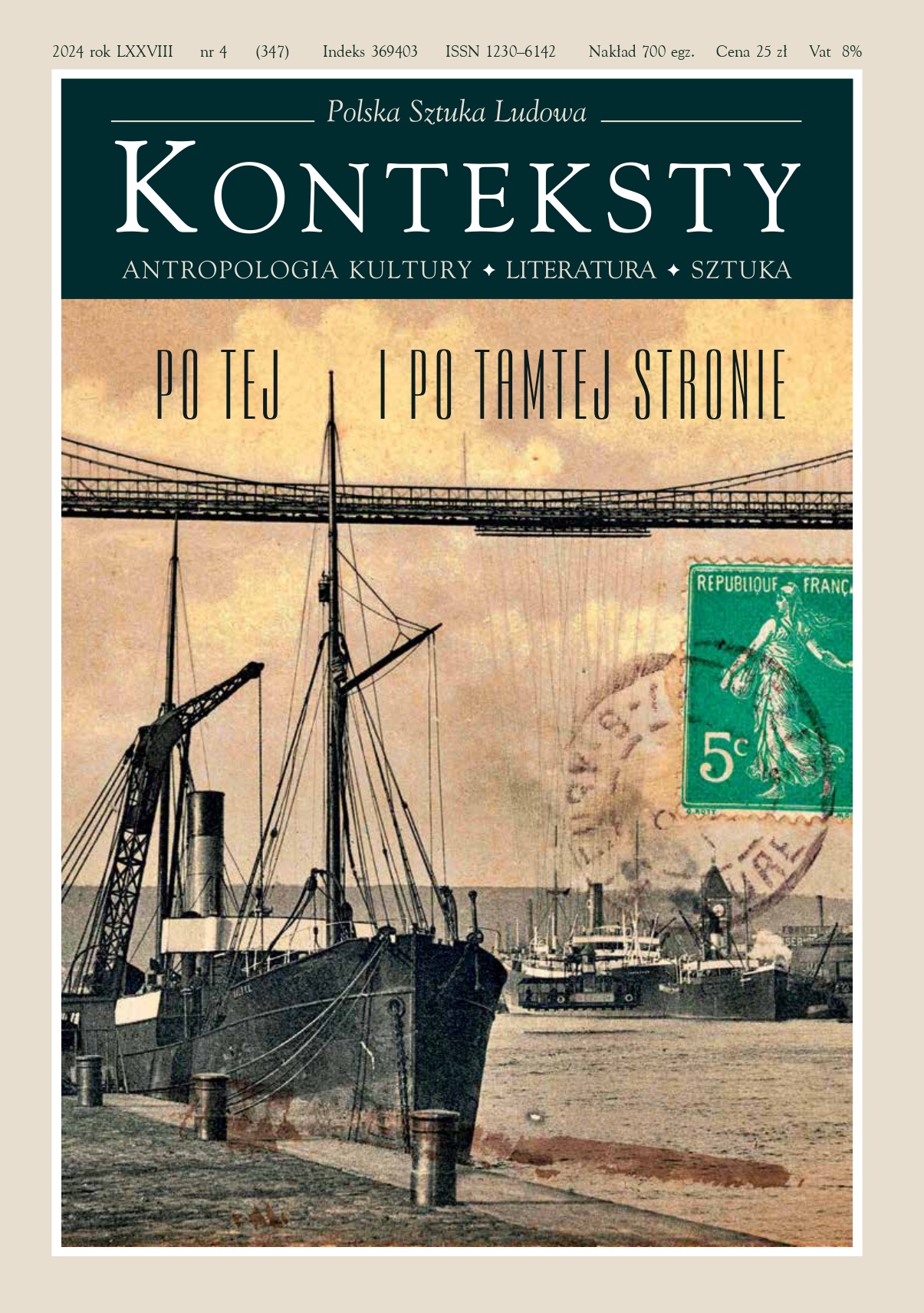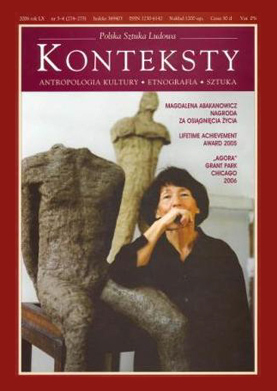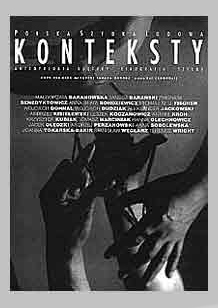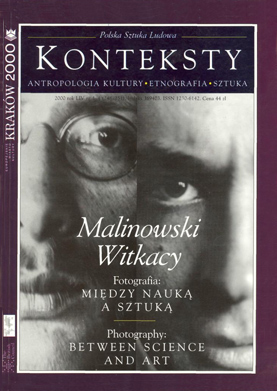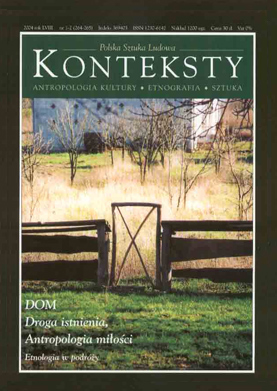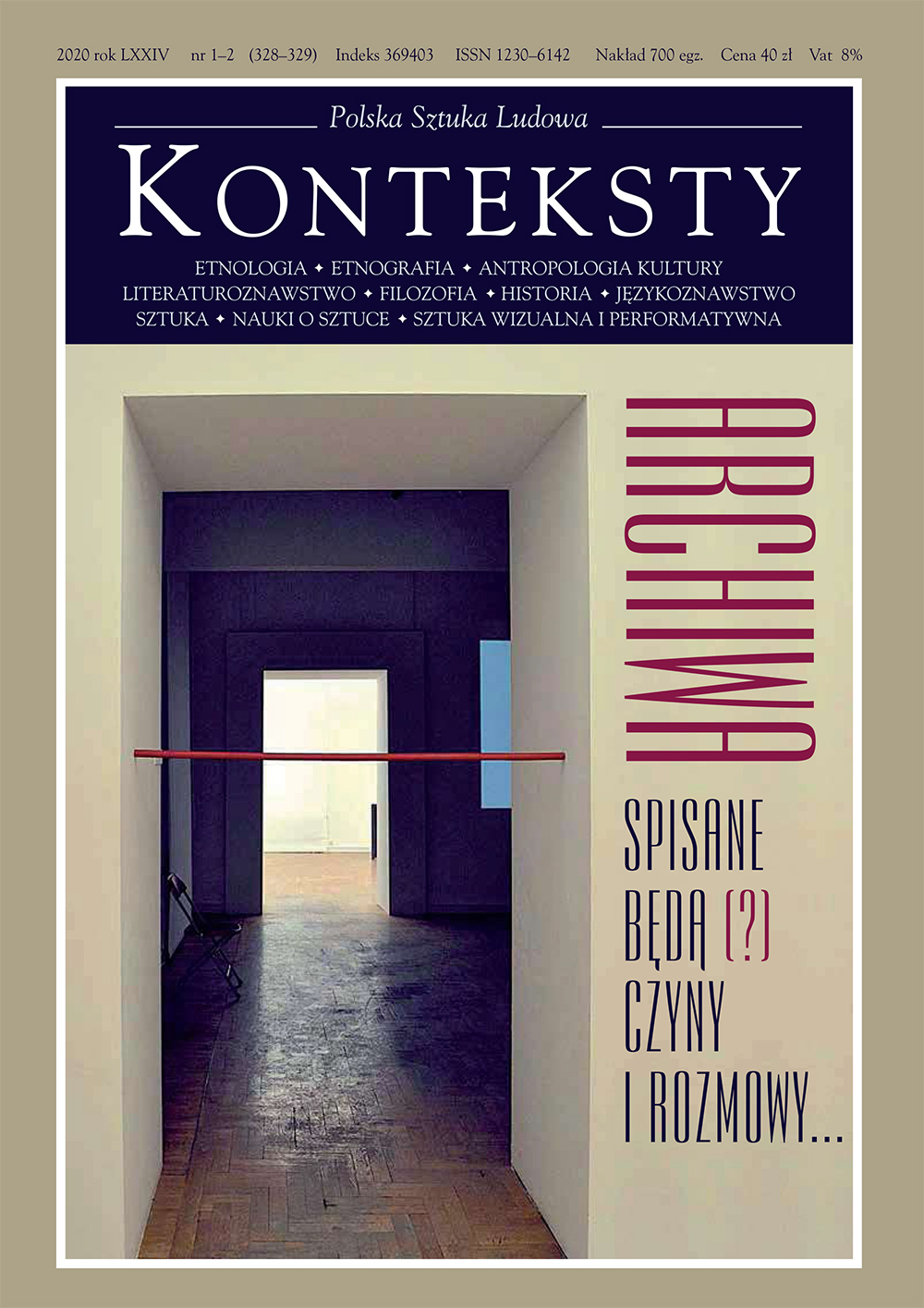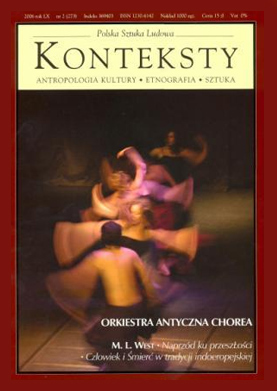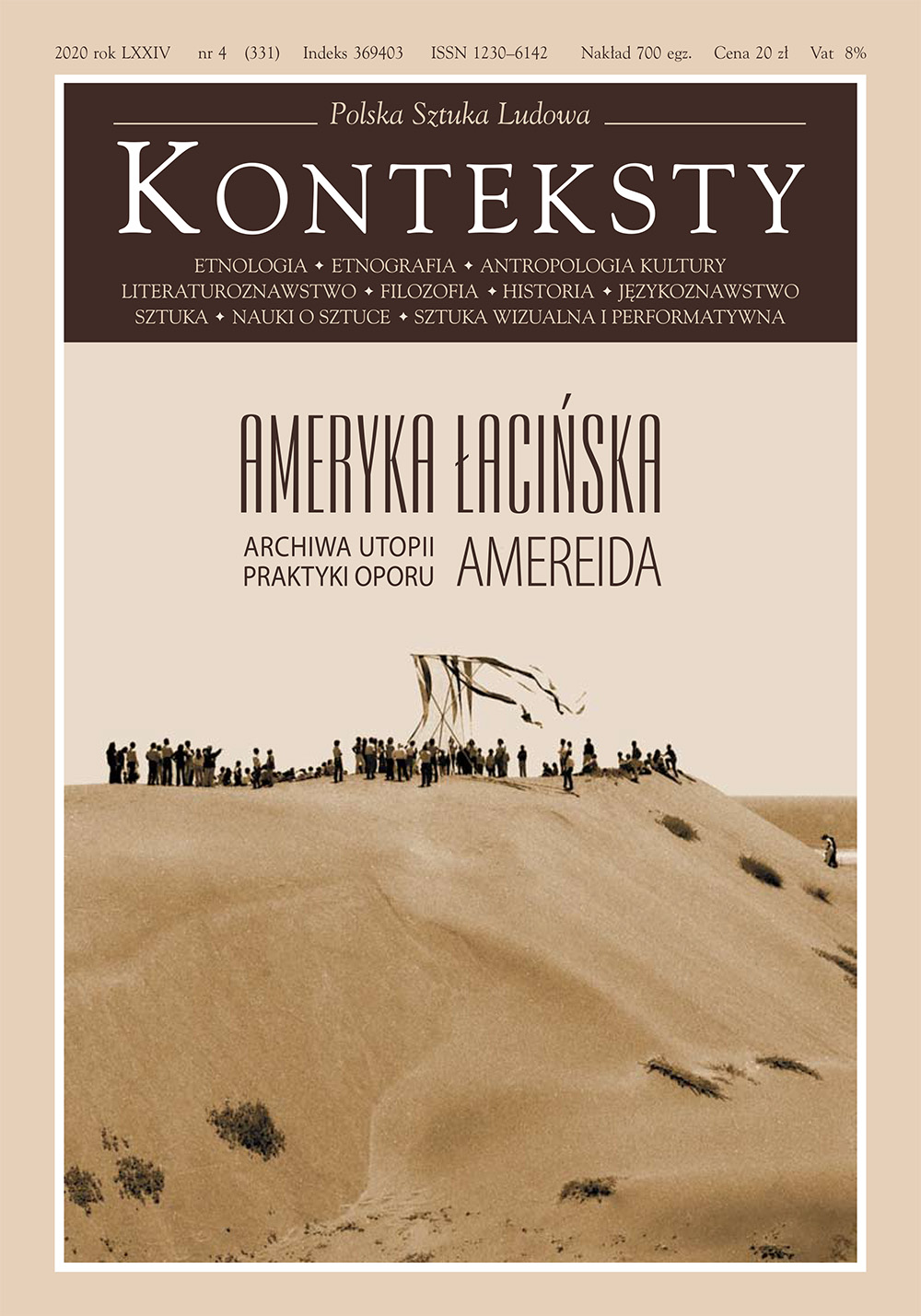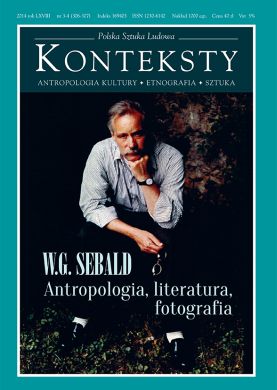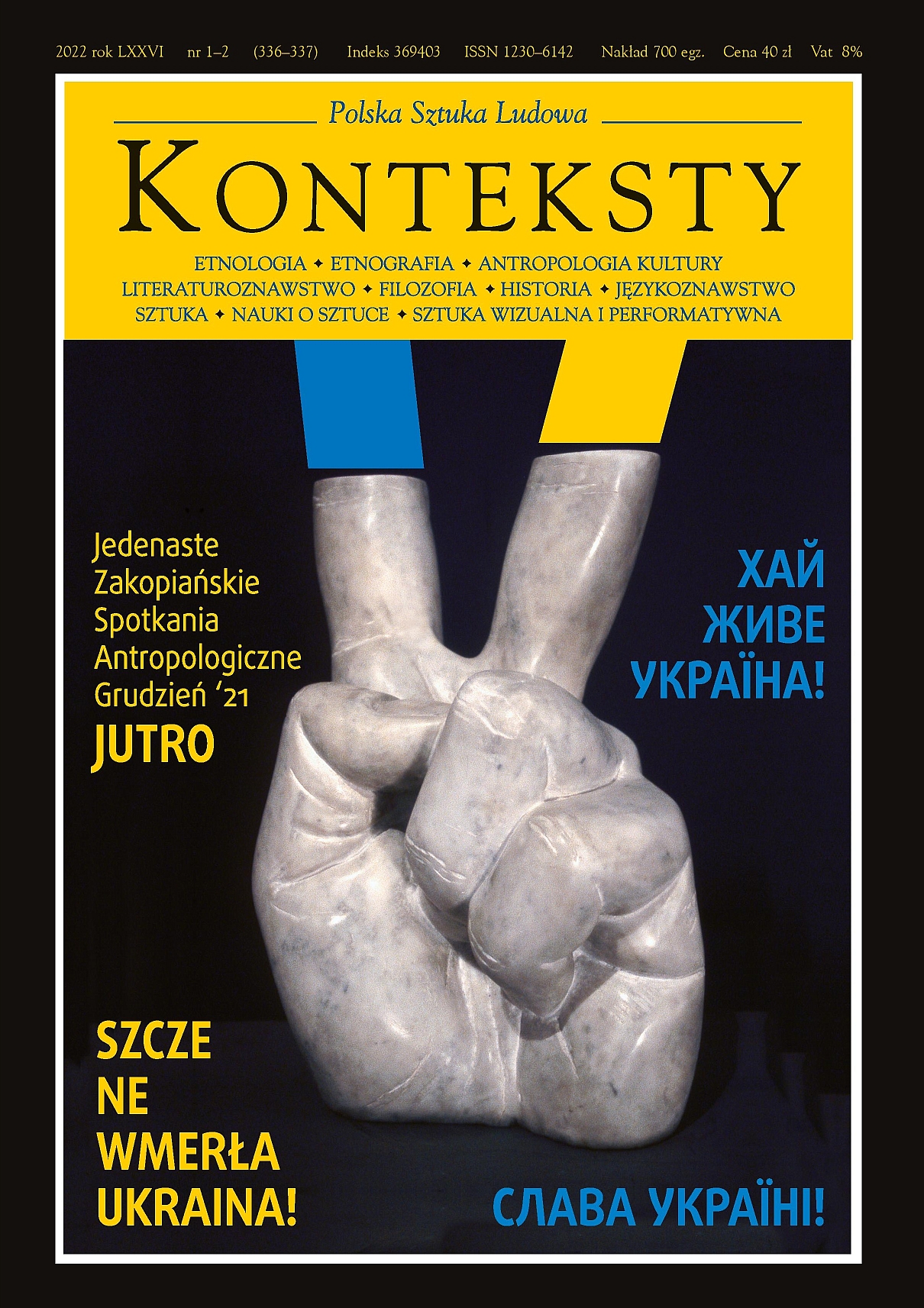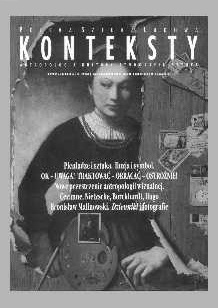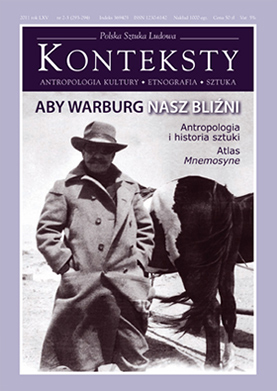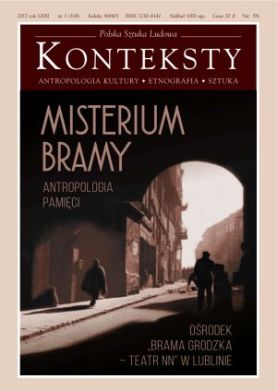Issue 2021/3 (334) - The Future of Prophecy - Second Autumn - Wydawnictwo Czarne
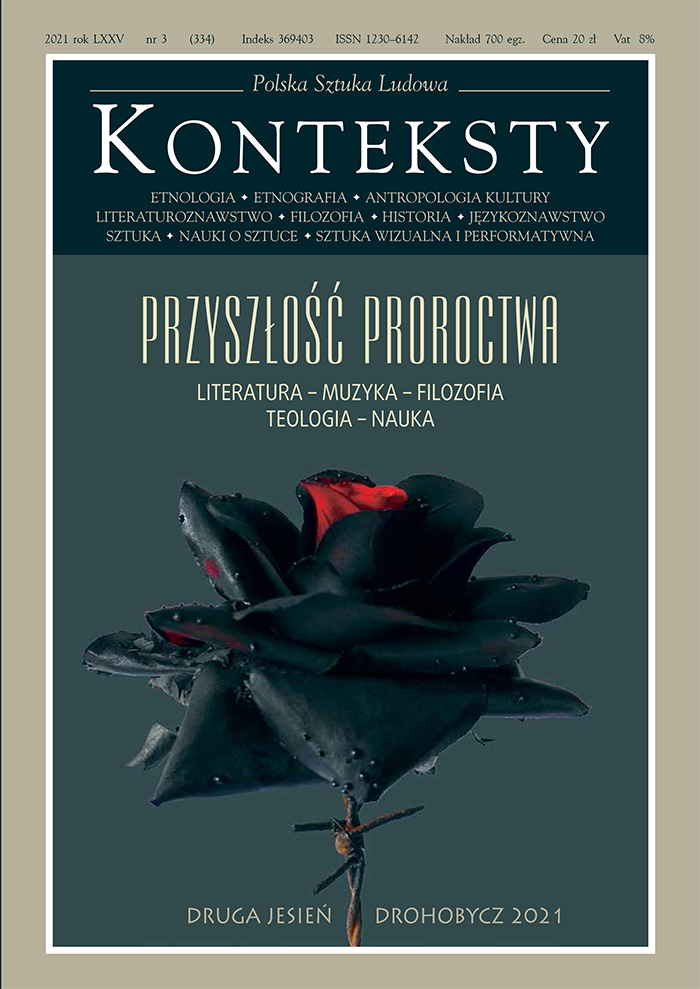
| Paweł Próchniak | Tamaryszki – Told in Drohobycz  | 3 |
Poetry is anthropology. It says something important about us as people. It also suggests that in the beginning (of the world) there was the word. In doing so, it makes it clear that the word creates us. An observant look at poetry, and via poetry, discloses anthropological registers elusive outside the poem. It also demonstrates that the poem is an instrument of cognition, and that the poetic form is a form of cognising thought and imagination – bold, free, striving towards the truth. The author of the presented sketch understands this literally, and thus gives the floor to poems. The passage of poems created by him – and composed of texts by Adam Zagajewski – leads towards identifications pertaining to “mutilating the world” (Spróbuj opiewać okaleczony świat / Try to Praise the Mutilated World) and those dimensions of human condition that are linked with enduring exile (Uchodźcy / Exiles), travelling (Walizka / Ordinary Suitcase of Hope) and experiencing the salvaging material quality of shadows (W Drohobyczu / In Drohobycz, Góry / Hills), but also metaphysical darkness and radical annihilation (Wschód / The East). At the same time, the sketch is a symbolic act of remembrance (and commemoration), for which an important point of reference is the tombstone executed by Krzysztof M. Bednarski – a sarcophagus containing Zagajewski’s ashes. | ||
| Paweł Próchniak | Second Autumn, Drohobycz  | 16 |
Druga Jesień (Second Autumn) is a cyclical scientific and artistic undertaking inaugurated in 2001, initiated and organised by the Igor Meniok Polish Scientific and Information Centre of the State Pedagogical University in Drohobycz, the Bruno Schulz Museum and Festival Foundation (Drohobycz) and the Bruno Schulz Festival Society in Lublin. In 2021 – upon the twentieth anniversary of the first edition of the event – the co-organiser of Druga Jesień was the Pedagogical University in Kraków. Druga Jesień is conceived as a cognitive undertaking and, at the same time, a form of restoring memory about Bruno Schulz in his hometown as well as the multi-cultural tradition of Drohobych and all that which remains deposited (and often concealed) in its history and topography, the biographies of residents, together with artistic, cultural and social ventures co-creating the phenomenon of the town. Events comprising Druga Jesień are organised on an annual basis upon the anniversary of the death of Bruno Schulz – shot and killed in a Drohobycz street by a Nazi officer. Their initial element is an open ecumenical meeting held on 19 November on the site of the artist’s execution and at the probable time (11 a.m.) of his death. This “mystery of memory” includes reading aloud a fragment of Druga jesień (in its original version and translated into Ukrainian by Yuri Andrukhovych), followed by the Kaddish and exequies for Schulz and persons dedicated to keeping his memory alive, performed by the head of the Drohobycz Jewish community and members of the Roman Catholic, Greek Catholic, and Ukrainian Orthodox clergy. The “mystery of memory” is followed by its expansion conducted in the course of various scientific, artistic, and social events (as a rule on 19–20 November). An important programme directive of Druga Jesień involves pursuing cognitive reflections in such a way so that they address the cultural and social obligations both of the humanities and the arts. This is the reason why Druga Jesień is cocreated according to the principle of complementariness, i.e. presentations of scientific inquiries and artistic undertakings; the whole venture constitutes a form of a synergy of cognizant reflection and imagination as well as the work, performatively rendered present and conducted by memory and recollections (as a form of cognition – cultural anamnesis). | ||
| Andrzej Franaszek | Dreadful Clouds. On Two Poems by Jarosław Iwaszkiewicz and Czesław Miłosz  | 19 |
During the early 1930s Jarosław Iwaszkiewicz, entangled in a thick web of friendly and amorous relationships designated both by his wife and Karol Szymanowski, Józef Rajnfeld or Czesław Miłosz, created Lato 1932 (Summer 1932), a multi-hued portrait of human existence plotted on pages of poems and stories. Here not only assorted spaces merge, but various forms of being overlap, and even the division into the sacred and the profane becomes invalidated. Harmony with Iwaszkiewicz’s poetry is discernible most vividly in two poems by Czesław Miłosz: Posąg małżonków (Statue of a Couple) and Obłoki (Clouds), written in the autumn or winter of 1935, when Miłosz returned from Paris (where he was on a scholarship) to Wilno to confront an unsolved love affair. Just as in Lato 1932 two dearest persons become separated by an impassable distance created by misunderstanding, and resemble the banks of a still, lifeless stream shrouded by night time and doomed to never meet again. We come across a genuine, direct dialogue with Iwaszkiewicz predominantly in Obłoki, a poem which Marian Stala described exactly a quarter of a century ago: “Without those thirteen verses the oeuvre of the author of Trzy zimy (Three Winters) would have been poorer due to the absence of an essential albeit elusive tone. I cannot envisage Milosz’s poetry without Obłoki – just as I am incapable of imagining the poetry of Mickiewicz with his poem: Nad wodą wielką i czystą (Above Water Vast and Pure)”. | ||
| Future of Prophecy. Literature – Music – Philosophy – Theology – Science | ||
| Marcin Trzęsiok, Ryszard Koziołek | The Future of Prophecy | 28 |
| Agata Bielik-Robson | Joachim’s Metastases, or Modernity as Self-fulfilling Prophecy  | 29 |
The author of this text intends to present the birth of modernity out of the spirit of prophecy, more concretely: the prophecy of Joachim of Fiore, whose Evangelium Aeternum, recognised by the Catholic Church as heresy, opened up totally new thinking about the future as “the Age of the Holy Spirit”. She first, therefore, considers the essence of Joachim’s prophecy and subsequently focuses on the so-called secularisation debate initiated by Karl Löwith and his historiosophic interpretation of Joachim. The article presents a discussion held by Karl Barth, Karl Löwith, Gershom Scholem, Jacob Taubes and Erich Voegelin, and ends with the conception of political mysticism conceived by Gustav Landauer, whose reflection firmly supports the Joachimite idea of inner-world salvation. The outcome of the discussion demonstrates that modernity is an epoch that exists only as long as we believe in it – nova era – has no justification apart from an attempt at implementing the prophecy contained in Evangelium Aeternum. | ||
| Bogdan Dembiński | Is Prophecy in Science Possible?  | 39 |
The presented text deals with methods of prediction in science, with particular attention paid to physical science. The article’s objective entails discussing the role and functions fulfilled in physics by symmetry treated as “inspired guesswork”. This unusual idea, inaugurated in deep antiquity, today too plays a fundamental role in the creation of physical theories and decides about the ability to predict within their range. The author attempts to describe the very essence of the comprehension of symmetry and to depict its functioning in contemporary physics theories. Attention is drawn also to philosophical implications associated with the discussed question. | ||
| Ireneusz Gielata | Future of the Prophet of Doom in Modern Times – Yesterday and Today  | 44 |
A portrayal of the contemporary prophet of doom created by referring to two examples: Count Wojciech Chojnicki, protagonist of Joseph Roth’s Radetzky March, and “the historian from the future”, narrator of the essay: The Collapse of Western Civilisation by Naomi Oreskes and Erik M. Conway. Ominous prophets discover apocalyptic signs in the modern idea of progress, indicating the dark side of modernisation processes which, in accordance with the identification made by Oswald Spengler, caused the arrival of the stage of the twilight of Western man. In their capacity as prophets of doom they simultaneously become critics of modernity – the seer from the Roth novel announces: “As we speak, it’s falling apart, it’s already fallen apart!”. The figure of the prophet thus co-creates the topos of contemporary apocalypticism, here described, by following the example of Spengler, as a topos of viewing the world with open eyes, the illusion of belief in progress. | ||
| Ryszard Koziołek | Political Future of Universal Literary Studies  | 53 |
The article formulates a question about the future of education within the range of critical literary reading matter in a universal, i.e. school edition. While avoiding the controversy dealing with the canon and curriculum of teaching the author poses the problem differently, by situating it in an extra-school sphere, namely, within the domain of the political outcome of literary studies education. The “prophetic” dimension of those reflections is embedded in the assumption that reading matter will become scattered within and outside the school, while the canonical list of books will survive as an emblem of a project impossible to realise. The merit of future schooling could turn out to be the heterogeneous nature of reading, which will become a civic exercise of sorts in constructing a community composed of the divergent and the dissimilar. Thus devised future school reading could prove to be the only universal process preparing to live in a political community of controversies, disparity, and ambiguity. | ||
| Tadeusz Sławek | Prophet and His Worlds  | 59 |
The article formulates a question about the future of education within the range of critical literary reading matter in a universal, i.e. school edition. While avoiding the controversy dealing with the canon and curriculum of teaching the author poses the problem differently, by situating it in an extra-school sphere, namely, within the domain of the political outcome of literary studies education. The “prophetic” dimension of those reflections is embedded in the assumption that reading matter will become scattered within and outside the school, while the canonical list of books will survive as an emblem of a project impossible to realise. The merit of future schooling could turn out to be the heterogeneous nature of reading, which will become a civic exercise of sorts in constructing a community composed of the divergent and the dissimilar. Thus devised future school reading could prove to be the only universal process preparing to live in a political community of controversies, disparity, and ambiguity. | ||
| Marcin Trzęsiok | Signs of Time. Awaiting a Change of the Paradigm  | 67 |
An attempt at a diagnosis of the situation in which contemporary humanities find themselves: trapped in relativistic discourses, sceptical towards all sort of universalia, and accepting an “axiom of finity” as their quasi-religious credo. In order to be able to overcome this one-sidedness they could benefit from the experiences of natural studies operating on the level of universalism if it were not for the fact that they are affected by a different extremity, i.e. materialistic reductionism, existing also in the theory of consciousness treated as an epiphenomenon – a product of the brain. Consequently, the prime current of natural science anthropology reinforces “the axiom of finity”, although in a different way. An alternative interpretation of the mind and its creative forces (imagination) as well as a different type of relations between humanists and natural scientists was proposed by the Romanticists, who cultivated the “sense of infinity”. Apparently, Romantic stands are today once again assumed by those currents of science dealing with the mind that are not part of the dominating materialistic paradigm. A great summa of those proposals is to be found in Edward and Emily Williams Kelly (et al.), Irreducible Mind. Towards a Psychology for 21st Century (2007). This is an offer of a different model of the brainconsciousness relation: not productive (consciousness is the product of the brain) but transmission (consciousness is a field, with the brain acting as the recipient of, and filter for information contained within). Consequently, they were able to include into the explication range of the theory those phenomena that the materialistic approach could only ignore or recognise as unworthy of attention. But perhaps the future belongs to transmission theories? How would this impact relations between the humanities and nature studies? | ||
| Grzegorz Strzelczyk | Can University Theology Still Fulfil a Prophetic Function?  | 73 |
Already in Biblical times prophecy was tempted by institutionalisation, thus losing the ability to critically judge reality for the sake of meeting the expectations of the powers that be. University theology can succumb to a similar temptation. The price paid for institutional security and care offered by Church and state authorities can involve the avoidance of dealing with problems uncomfortable for either of the two patrons. | ||
| Piotr Augustyniak | Prophet of a New Imaginarium  | 78 |
The article attempts to problematize the religious figure of the prophet by deciphering it with the key of reflections on the Real and the cultural imaginarium. The first part of the deliberations focuses on mutual relations between the real and the imaginarium, in particular on a situation in which the latter becomes “unstuck” and ceases to be an effective medium with whose assistance society can decipher the dynamics of the Real and react to it. The author also discusses the consequences of such a situation for socio-cultural life and the manner in which the new imaginarium, correctly fulfilling its functions, emerges. Findings made in part two allow to precisely assess the phenomenon of the prophecy in the dynamics of culture by demonstrating its wider (not merely religious) significance, of crucial importance for the progress of social life. The text ends on remarks about the figure of the messiah, which emerged as an essential correlate of the prophecy phenomenon. | ||
| Dariusz Czaja | Mysterium iniquitatis. The Last Prophecy of Sergio Quinzio  | 83 |
Mysterium iniquitatis is one of the most unusual and shocking works by Sergio Quinzio, Italian philosopher, theologist, and Biblical scholar. This text of a fictional encyclical letter read by the equally fictious Pope Peter II in the Roman basilica of St. John Lateran was issued in 1995 by the Adelphi publishing house. The title of the book is simultaneously that of the papal encyclical. In this apocryphon Quinzio embarked upon an exegesis of a prophetic fragment from 2 Thessalonians 2, 1–9, which – in his opinion – records the downfall of the Church of Rome. The presented article extracts the prime motifs of Quinzio’s prophecy and presents their chief theological contexts. Ultimately, the apocryphon, maintained in a catastrophic spirit, is juxtaposed with a secular prophecy by Giorgio Agamben, in which the theme of the future of the Church is perceived in slightly more optimistic hues. The conflict between the two stands provides food for thought and could be cognitively productive. | ||
| Paweł Tomczok | Endless Capitalism  | 95 |
A presentation of discussions on the idea of the end of capitalism based on an analysis of fragments of writings by Karl Marx, Friedrich Engels, Karol Kautsky, Edward Bernstein and Rosa Luxemburg. An examination of those different stands serves the creation of a semiotic model of modern left-wing prophecies, which combines elements of scientific prognosis and the philosophy of history referring to the idea of progress. These two modern forms organising the future, described by Reinhart Koselleck, have replaced prophecy, but at the same time assumed many of the latter’s structural elements, such as the idea of the end, the apocalypse, and radical breakthrough. Modern leftist political programmes must within their structure make use of elements of apocalyptic prophecy; at the same time, however, those linear images of interrupted time must be grounded within an analysis of cyclical phenomena upon which prognoses are based. Present-day popularity of the notion of the end of capitalism has to tackle yet another idea – the infinite crisis, which poses a challenge for establishing prophecy in the economic reality of financial-monopolistic capitalism affected by chronic depression and stagnation. | ||
| Aleksander Nawarecki | World without Augurs  | 103 |
It is difficult to understand the almost total disappearance of this ancient and all-mighty institution flourishing w Cilicia, Pisidia, and Pamphylia, and subsequently in Greece, where the majority of outstanding philosophers (including Pythagoras, Plato, Socrates, Zenon, or Democritus) was composed of augurs. In the Celtic world their role was performed by druids, but the most significant for European culture was Rome, where this office was held not only by such sages as Cicero, the greatest authority in this domain (author of the treatise De divinatione), but even by emperors, and the dispute concerning the number and composition of the council of augurs and their relations with the consuls comprises an epic, a gigantic power game. No event of importance (such as a declaration of war) could take place without an inaugury, i.e. the intervention of the augurs. In Rome, which according to its myth was founded and laid out by augurs (Remus and Romulus), their auspices held the highest rank. Furthermore, they were firmly embedded in the rational structure of administering the empire and numerous institutions, such as the monetary system (augurian symbols were often etched on coins). It must be added, however, that Roman auspices were not sensu stricto divinatory since they did not foretell the future but solely confirmed, rejected, or suspended the established law and decisions passed by the Senate or the emperor. This state of things lasted until 391, when upon the basis of an edict issued by Emperor Theodosius all pagan cults were forbidden. From that time the augurate disappeared almost totally and remembrance gradually faded. | ||
| Dorota Siwicka | Roza Weneda: Say Nothing to Tomorrow’s Corpses  | 109 |
The author of the article regards the sentence: “Say nothing to tomorrow’s corpses” – uttered by Roza – to be the problem centre of Lilla Weneda by Juliusz Słowacki, the greatest Polish drama about extinction. The plot takes place on the eve of an ultimate defeat (the Lechite invasion) intent on destroying the ancient, mythical tribe of the Weneds. Roza is a seeress (sorceress) aware of the inevitably encroaching catastrophe, but does not want her people to learn the terrible truth. The uniqueness of the character created by the poet (combining features of Biblical prophets and völv – seeresses from Icelandic sagas) and the unusual nature of her conduct (a refusal to reveal the prophecy) provoke the posing of universal questions transcending the nineteenth-century context of Słowacki’s work. D. Siwicka thus enquires about the effectiveness of the impact of apocalyptic prophecies (a medium brimming with expert warnings and the fantasies of pop-culture authors) upon the change of human stands at the time of global threats. In doing so, she asks whether the transformation of contemporary man can take place under the impact of fear caused by images of the end. Finally, she enquires about the harp proposed by Słowacki – a symbolic instrument whose sound was to grant valour and lead to victory. | ||
| Wojciech Stępień | Is the New Bel Canto the Future of Music? Several Remarks on the Life-giving Forces of Melody  | 113 |
An attempt at solving the question: why are melodies the vital force and energy of European music, and whence comes this incessant need for new melodies? Psychological studies indicate that melodic talents are the innate feature of every person and advance from the first cry of the new-born and then simultaneously with the development of speech. The progress of these abilities repeats the melodic stages that mankind experienced in its evolution. Reflections presented in this article focus, in greater detail, on the question: to what extent are the three fundamental laws of perception of Gestalt psychology (proximity, continuity, closure) respected in the history of European music, and what sort of consequences were introduced by the twentieth century, when numerous composers spurned melody? The turn of the contemporary public towards light and classical music is the natural consequence of twentieth-century musical avant-gardes, which severed communication with the listener. The restitution of the melody began in the 1970s due to the return of composers to singing (New Romanticism) and progresses thanks to their broad interest in the opera. Will the opera, which was the nucleus of Baroque music, once again inspire contemporary music? Are we witnessing a return to the melody, comparable with its revival during the Renaissance, in the wake of complicated and over-intellectualized trends at the end of the Middle Ages (ars subtilior)? Examples taken from the history of music and cited in the article demonstrate the ways in which across the ages mankind wished to save certain melodies for future generations by introducing a new text (contrafactum), instrumental versions and transcriptions, variations on popular melodies, as well as variants of folk and religious songs and their use as material for improvisations. | ||
| Tomasz Bocheński | Witkacy, or Improvisations of a Visionary  | 121 |
Witkacy used the term: improvisation in three novels written during the interwar period, the drama Sonata Belzebuba, and theoretical and journalistic texts. He conceived improvisation as a creative act comprising an introduction to constructing a work of art, being of the opinion that only authors with impure ethical intentions can afford to improvise. | ||
| Paweł Drabarczyk | Time of Voices in the Wilderness. Selected Remarks about the Prophets and Heretics of Abstraction  | 129 |
The onset of abstraction is firmly linked with the figure of the artist-prophet. Its application cannot be reduced to exalted rhetoric, relentlessly dressing artistic reality in a sacral costume. We encounter prophetic motifs in statements made by, i.a. Kandinsky and Malevich. Their “prophetic nature” appears to be not merely a formula of self-creation or even more so a cheap trick with whose assistance the history of art and publicists subsequently wished to present the coryphaei of abstraction The prophetism of abstract artists also did not constitute an attempt at a “restitution of religion” nor can it be reduced to a propaganda of theo- and anthroposophy, on which it thrived, but is rather part of a modernistic return to post-secular Romantic motifs. The presented article is an attempt at deciphering this prophetism from the vantage point of, i.a. reflections about the prophets proposed by Abraham J. Heschel, as well as the heritage of Romanticism. | ||
| Joanna Sarbiewska | The “White Stone” of Epihany. Post-secular Abgrund Mysticism and its Film Manifestations a Contribution  | 136 |
A proposal of “re-deciphering” the event of kenosis interpreted by apophatic mysticism in the light of post-secular thought and in reference to the films: Camille Claudel, 1915, directed by Bruno Dumont, and Nic osobistego (Nothing Personal), directed by Urszula Antoniak. The described experience of the transmutation of human existence, manifested in transrational consciousness and linking the cogs of the “mysticism of the essence” and “erotic mysticism”, has a chance to guide beyond that which is binary, identical, and familiar. It could be said that a paradoxical encounter of the (essentially Judeo-Christian) “purging flame” with the (essentially Buddhist) “distancing, transparent mindfulness” can open up a register of a new, post-dogmatic “sacred time”. The transforming, ecstatic experience of death, comprehended as a process of stripping the subject of false cognitive constructs, the products of a fixation with “selfhood” (Selbstheit), is an essentially vital movement, setting free extra-intentional, selfless affirmation, “clear sight”, and existence within (divine) Abgrund. | ||
| Agnieszka Kaczmarek | Grammars of Anxiety  | 140 |
The aim of article is the answer: What is a grammar? A set of rules, a supervisor of the order of languages? It establishes and guards what is convention, it is a sentinel of correctness. It sets limits and possibilities of use. What is Dariusz Czaja’s “grammar of whiteness”? This is the grammar of a color that is hard to define, semantically rich. It contains metaphors of neutrality, while being saturated with a multitude of colors. The Dialectics of whiteness by Czaja refers both to the supervision of established norms, as well as being a tool for organizing a selected systematics. Each of the essays contained in The Grammar of Whiteness can be treated as a separate epitaph. They are the mournful songs of a humanities that leans back on the limits of existence. | ||
| On Wydawnictwo Czarne and Its Books | ||
| Tomasz Wiśniewski, Monika Sznajderman, David Malcolm, Katarzyna Kręglewska | Monika Sznajderman’s Books. Conversation | 145 |
| Tomasz Wiśniewski, Andrzej Stasiuk, David Malcolm, Katarzyna Kręglewska | Quest for the Primal Landscape. Conversation with Andrzej Stasiuk | 151 |
| Katarzyna Kręglewska | “Present Perfect”. On the Sulina Series | 156 |
| Monika Szuba | “Where Spiders and Ravens”: on the “Menażeria” Series  | 175 |
In recent years, and in the face of a sixth mass-scale extinction of assorted species, it is possible to observe a proliferation of publications about the relations between man and Nature. The awareness that we had crossed a critical point after which it is impossible to reverse numerous effects of the anthropocene – an era in which man is the prime force shaping the geological and natural processes of the planet – had permeated literature and philosophy already several decades ago. Suffice to evoke texts by such authors as John Berger, Jacques Derrida, Gilles Deleuze, and Félix Guattari, who from the early 1980s treated man’s relations with other animals as a problem. “Nature writing”, present in English literature for almost 200 years, is flourishing also in Polish conditions, as evidenced by the “Menażeria” series issued by the Czarne publishing house. One of the authors in this series is Robert Pucek, who describes the multiplicity of animals, reflects on language vis a vis the material nature of the world, and poses questions about the limits of cognition, writing about the “taxonomic obsession”, which reveals incessant attempts at permeating the mystery of existence. By transcending anthropocentric perception Pucek combines descriptions of the pluralism of beings with elegiac reflection on the vanishing of numerous species of insects. | ||
| Wojciech Owczarski | Nostalgia, Memory, and Death  | 180 |
The article focuses on selected books from the “Przez Rzekę” series. Upon the example of Intoxicated by My Illness by Anatole Broyard, Shadow Child by Pieter Frans Thomése, and To jest wasze życie by Małgorzata Baranowska the author presents three different strategies of coping with dire misfortune (terminal and chronic illness, the loss of a child) by means of literary activity. Here the object of interpretation is not so much literature as its somewhat “magic” use for the purpose of self-therapy. The second part of the article deals with the problem of ageing, the functioning of memory, and the phenomenon of nostalgia. The point of departure for the author’s reflections is The Nostalgia Factory. Memory, Time and Ageing by Douwe Draaisma. | ||
| Barbara Świąder-Puchowska | Map and Territory of the Body. A Complete Portrait of Witold Gombrowicz  | 187 |
Presentation of a biography of the author of Ferdydurke from the viewpoint of the book: Gombrowicz. Ja, geniusz by Klementyna Suchanow. The author of the article concentrates on, i.a. assorted contexts in which the portrait of the man of letters functions, including texts against whose backdrop his reception is situated. Here, the prime context is the problem of the body and corporeality discussed in the writings of Witold Gombrowicz, which in the light of his biography could be recognised as a literary record of his experiences, as proven, i.a. upon the basis of the contents of Kronos. We deal with the writer’s endless negotiations with his corporeality perceived in a cultural, biological, medical, and erotic dimension. Another context cited in the article is the heretofore reception of the oeuvre of Witold Gombrowicz and, more widely, reflections by students of his life and works, whose intention is to demonstrate the way in which the Suchanow biography is part of Gombrowicz-focused studies and supplements them. | ||
| Małgorzata Jarmułowicz | Masks of an Improbable People. On the Margin of a Book by Elizabeth Pisani  | 199 |
Upon the base of Elizabeth Pisani’s Indonesia Etc.: Exploring the Improbable Nation the author of the article constructs her narration about the “essence of the Indonesian spirit”, analysed by Pisani as a binder of the multi-ethnic and multi-cultural identity of the Indonesian people. In reflections founded on the experience of her journeys to Indonesia the author accepts the vantage point of a theatre expert and an anthropologist dealing with spectacles, thus placing upon the phenomenon of the “improbable people” a network of associations connected with the concept of the mask. In reference to Indonesia this conceit produces exceptionally numerous and semantically differentiated connotations. It also signifies much more than only a vast representation of “mask” artefacts and performative practices, unique for each traditional culture of Indonesia. M. Jarmułowicz treats the national identity of Indonesia as a mask based on the Bhinneka Tunggal Ika (“unity in diversity”) motto disclosed in a particularly ostentatious manner during mass-scale celebrations of state holidays. She also takes a closer look at the vividly theatralised social mask of the individual Indonesian, determined by ceremonial forms of community life and subjected to extremely rigorous self-control. A counterbalance to this identity are Indonesian trance practices described at the end of the book, freeing from the pressure of daily social roles in the safe and socially accepted conditions of the ritual spectacle. | ||
| Janusz Bohdziewicz | Elementary Trails. Notes on the Margin of the Tropiki Series Issued by Wydawnictwo Czarne  | 207 |
Initiating a conversation with the authors of the Tropiki series, and acquiring together with them anthropological sensitivity to all differences decisive for each individual uniqueness of man, one can discover the proximity of those stands with the vision of sense du monde, discovered by Jean-Luc Nancy, that steers life and appears along the junction of persons attracted to each other. The Kingdom of God – regardless of the manner of its comprehension and the process of filling it with the sense of life – is neither here nor there, will not emerge then or at any other time, but may take place in our midst, somewhat as when certain people jointly undertake an arbitrary deed, summoning each other from assorted vantage points and sides, and making use of the difference of bodies, personalities and competences, so as to unite in mutual and meaningful activity for the sake of common good and cause: this is exactly demos-creation, a world constantly being formed on a daily basis and nigh. | ||
| Olga Kubińska | After all, I will not abandon them: discourse on non-memory of Polish-Jewish caretakers of children during the Holocaust  | 213 |
The article analyses a collections of essays edited by Magdalena Kicińska and Monika Sznajderman published in 2018. The essays were devoted to now forgotten house-mothers in Jewish institutions taking care of children during World War II, as well as other women involved in aiding orphaned Jewish children. The article attempts to place this collection in the context of feminist and gender perspectives in the 21st c. Holocaust studies. The conclusion of this paper is that genological issues are more central in this research than attempts to situate these texts in the context of current cultural studies. In consequence, it may be claimed that the essays, well documented and furnished with state-of-the-art critical apparatus appropriate for historical publications, are at the same time examples of modern Holocaust prose of an anthropological bent and as such they make a seminal contribution to Polish discourse on memory and non-memory of the Holocaust. | ||
| Agnieszka Bednarek-Bohdziewicz | Kaszëbë Call Out…  | 220 |
A presentation of Kaszëbë, a book by Tomasz Słomczyński, part of the “Sulina” series issued by the Czarne publishing house. This well-composed collage of coverages concerns the history and contemporary life of the Kashubians (including identity problems and the attitude of other compatriots to the native Pomeranian populace). Słomczyński tried to achieve an ethical and thorough collection of efforts at describing the world of the Kashubians without any claims towards a grand (one and only correct) narrative. The article takes this opportunity to mention the absence (or marginal presence) of the Kashubian-Pomeranian perspective in universal Polish historical memory. | ||
| David Malcolm, Tomasz Wiśniewski, Katarzyna Kręglewska, Andrzej Stasiuk | On Nothingness. A Conversation with Andrzej Stasiuk | 226 |
| Krzysztof M. Bednarski | From the Artists Archive pt. 7: The Invisible | |



